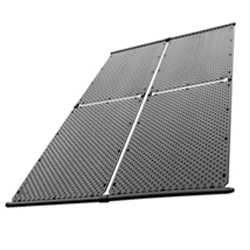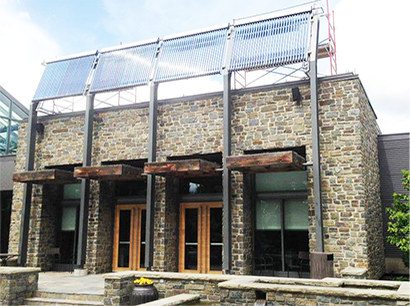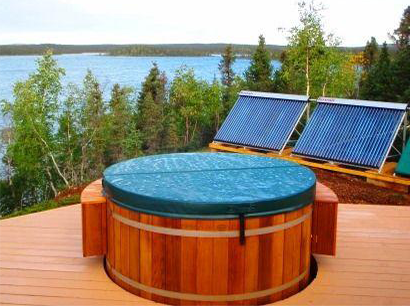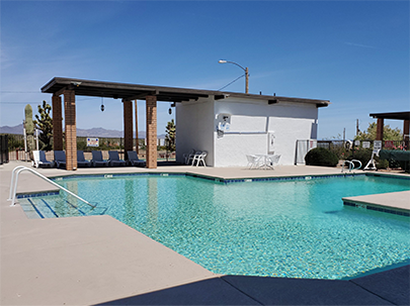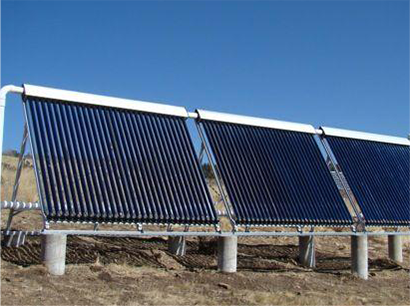These are great for budget application and most commonly used in solar pool heating. They use a black absorption material to capture and transfer this thermal heat to the mass volume of the pool water.
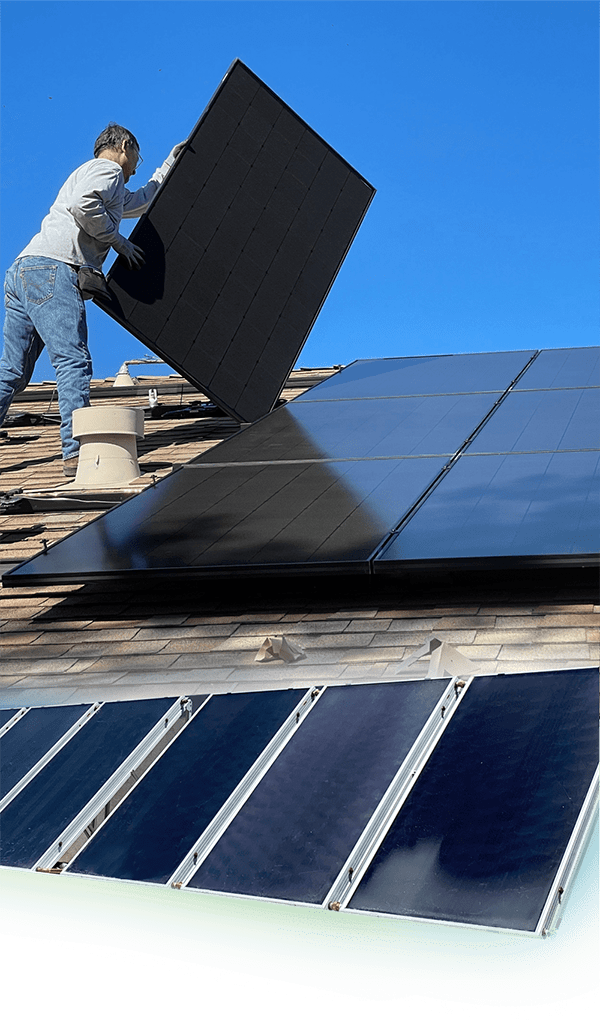
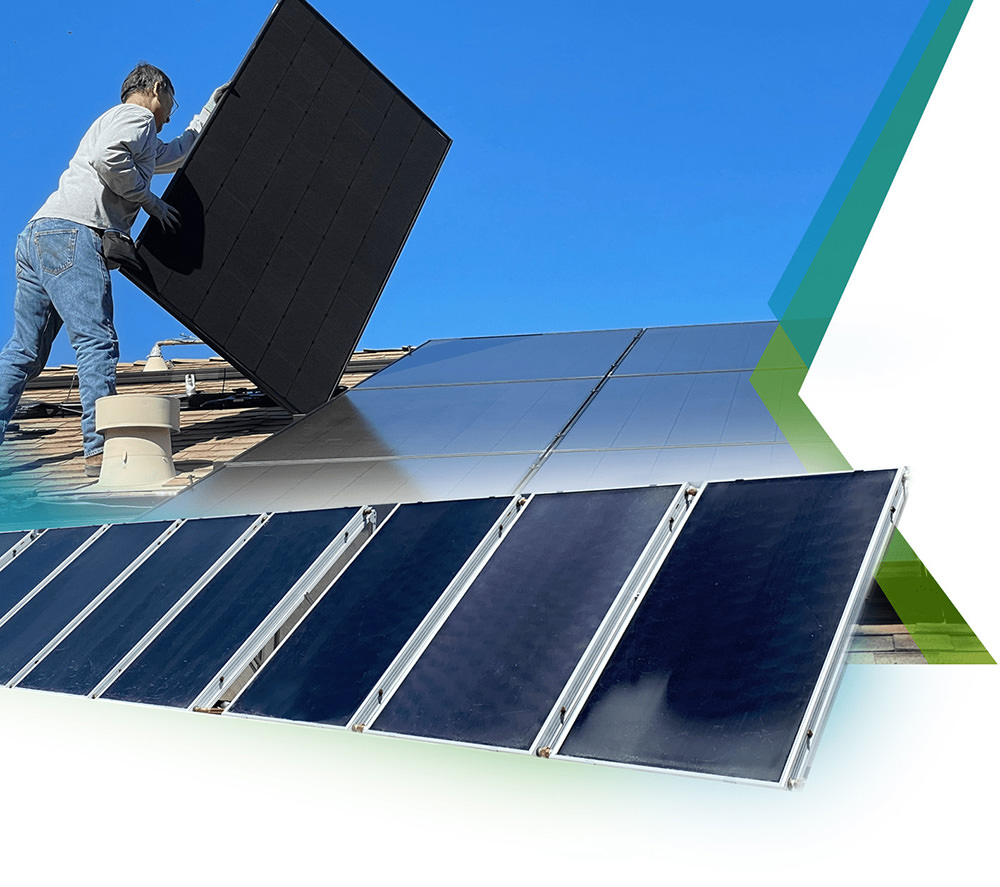
SOLAR THERMAL HEATERS
While there a lot of ways to harness the sun’s energy we focus on the most cost-effective means, and this is done by harnessing the thermal energy direct.
This is called a solar thermal heater and can be done with a solar thermal collector, photo voltaic panels, or using a heat pump. Both methods work by transferring the solar thermal energy directly and using a thermal battery system to store the energy or in the case of a solar pool system the thermal energy is stored directly in the pool water.

Solar Thermal Collectors
These collectors simply absorb the heat directly by means of a special heat absorption material. Unlike PV panels the solar thermal panel does not create electricity. Instead, it absorbs the thermal energy. This process is up to 5 times more efficient than converting the suns energy to electricity. For applications requiring heat such as space heating, pool heating, and domestic hot water, all are much more efficient using solar thermal collectors versus creating the electricity and then converting it back to thermal electricity. As roof real estate is limited to homeowners, using solar thermal allows the most energy per square foot to be harnessed.
There are three main technologies uses for solar thermal collectors:
These use much better absorption material and usually aluminum or copper to better absorb and transfer the sun’s thermal energy. The collectors are protected by a glass window, similar to the window of a house, that keeps the heat energy separated from the colder outside temperature. As such they can produce much more energy that unglazed Systems.
These are the most advanced heating system and use a combination of thermos like technology to keep the heat in as well as a low-pressure vacuum in a copper pipe to create a steam reaction at lower temperatures. Vacuum tubes can work in very cold weather. However, they are so efficient that the problem can be too much heat in the summer months when the demand is low. As a matter of fact, a vacuum tube can reach temperatures of 480 F if not managed properly.
SOLAR THERMAL COLLECTORS
These collectors simply absorb the heat directly by means of a special heat absorption material. Unlike PV panels the solar thermal panel does not create electricity. Instead, it absorbs the thermal energy. This process is up to 5 times more efficient than converting the suns energy to electricity. For applications requiring heat such as space heating, pool heating, and domestic hot water, all are much more efficient using solar thermal collectors versus creating the electricity and then converting it back to thermal electricity. As roof real estate is limited to homeowners, using solar thermal allows the most energy per square foot to be harnessed.
There are three main technologies uses for solar thermal collectors:
These are great for budget application and most commonly used in solar pool heating. They use a black absorption material to capture and transfer this thermal heat to the mass volume of the pool water.
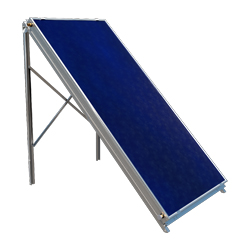
These use much better absorption material and usually aluminum or copper to better absorb and transfer the sun’s thermal energy. The collectors are protected by a glass window, similar to the window of a house, that keeps the heat energy separated from the colder outside temperature. As such they can produce much more energy that unglazed Systems.
These are the most advanced heating system and use a combination of thermos like technology to keep the heat in as well as a low-pressure vacuum in a copper pipe to create a steam reaction at lower temperatures. Vacuum tubes can work in very cold weather. However, they are so efficient that the problem can be too much heat in the summer months when the demand is low. As a matter of fact, a vacuum tube can reach temperatures of 480 F if not managed properly.
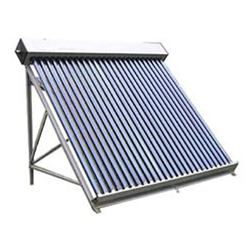

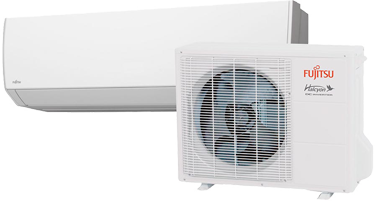
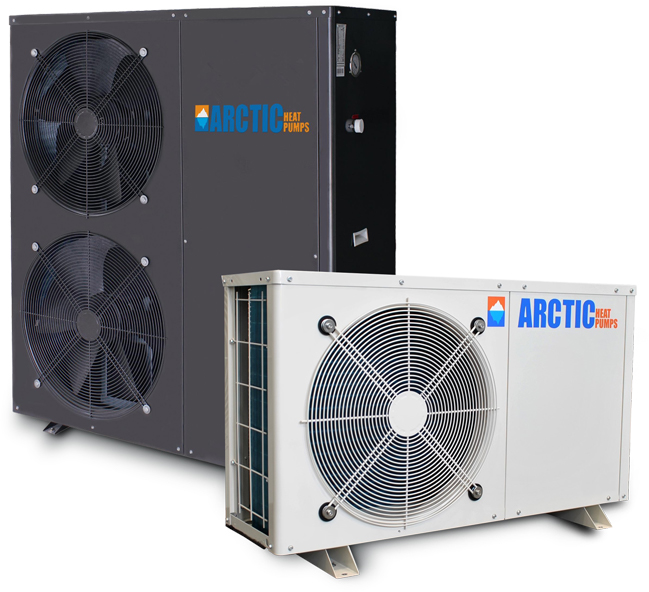
Solar Heat Pumps
Heat pumps have evolved and are becoming a mainstream source of heat energy. The heat pump works by harnessing the solar thermal energy in the air. This free energy exists in all temperature ranges on our planet as the sun heats the earth, the earth in return heats the air. The heat pump pulls this energy from the air and transfers it to a thermal storage system to use as needed. Make no mistake, even in freezing temperatures there is solar energy in the air. As a matter of fact, only at Zero Kelvin (-460 Fahrenheit) do we reach zero energy in the air. These systems also have an advantage over solar collectors in that they can also cool.
There are two main types of heat pump:
Air-to-Air
These are also known as mini-splits. Similar to an Air conditioner they have an evaporator outside and a head unit indoors that heats the air inside through a condenser unit. The problem with these units is that they are not able to store energy, and they generally don’t work well at low ambient temperatures.
AIR-TO-WATER
With the development of EVI (enhanced vapor injection) these air to water heat pumps operate hadronically, transferring the outdoor air energy into a heating fluid such as a water/glycol mixture. This allows storage and central distribution. An EVI Heat Pump can work at temperatures as low as -30 C (-22F). The advantages of storage are significant to the overall cost and efficiencies of a heating system. Water can store 100 times more energy than air per volume, and the cost to move water in a hydronic system versus a ducted system is much more cost effective.
SOLAR HEAT PUMPS
Heat pumps have evolved and are becoming a mainstream source of heat energy. The heat pump works by harnessing the solar thermal energy in the air. This free energy exists in all temperature ranges on our planet as the sun heats the earth, the earth in return heats the air. The heat pump pulls this energy from the air and transfers it to a thermal storage system to use as needed. Make no mistake, even in freezing temperatures there is solar energy in the air. As a matter of fact, only at Zero Kelvin (-460 Fahrenheit) do we reach zero energy in the air. These systems also have an advantage over solar collectors in that they can also cool.
There are two main types of heat pump:

Air-to-Air
These are also known as mini-splits. Similar to an Air conditioner they have an evaporator outside and a head unit indoors that heats the air inside through a condenser unit. The problem with these units is that they are not able to store energy, and they generally don’t work well at low ambient temperatures.
AIR-TO-WATER
With the development of EVI (enhanced vapor injection) these air to water heat pumps operate hadronically, transferring the outdoor air energy into a heating fluid such as a water/glycol mixture. This allows storage and central distribution. An EVI Heat Pump can work at temperatures as low as -30 C (-22F). The advantages of storage are significant to the overall cost and efficiencies of a heating system. Water can store 100 times more energy than air per volume, and the cost to move water in a hydronic system versus a ducted system is much more cost effective.

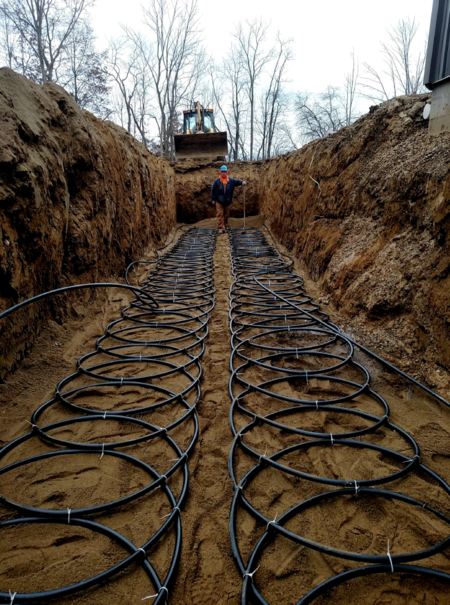
Geothermal
This is also a from of solar thermal heating but unlike taking the energy from the air, geothermal units take the energy directly from the heated ground. The sun heats the ground during the day and therefore stores massive quantities of solar thermal energy that can be harnessed via a heat pump. Geothermal systems can be more efficient that air heat pumps but their ROI are typically lower because of the great expense of running piping underground to pull the thermal energy out.
Solar Photo Voltaic
This is the process where light photon from the sun creates an electrical charger that is ran in a series of cells to create a useable electric current to power our homes and cars. This type of energy is becoming very popular especially with the introduction of Net Metering, whereby any surplus energy is fed into the grid for a credit back to the homeowner. However not every country or region has this policy and as such expensive battery system are needed with short deteriorating life cycles. The efficiency of a typical solar panel in 2023 is between 15-20%. The average efficiency of a solar thermal panel is between 65-85%. However, we have included PV as its electricity can be used to drive thermal heating processes such as powering an electric water tank or electric heaters.
While not efficient compared to direct solar thermal, large system with surplus energy could definitely use this to extra energy to heat a water tank thus storing the energy indirectly through a buffer tank.

GEOTHERMAL

This is also a from of solar thermal heating but unlike taking the energy from the air, geothermal units take the energy directly from the heated ground. The sun heats the ground during the day and therefore stores massive quantities of solar thermal energy that can be harnessed via a heat pump. Geothermal systems can be more efficient that air heat pumps but their ROI are typically lower because of the great expense of running piping underground to pull the thermal energy out.
Solar Photo Voltaic
This is the process where light photon from the sun creates an electrical charger that is ran in a series of cells to create a useable electric current to power our homes and cars. This type of energy is becoming very popular especially with the introduction of Net Metering, whereby any surplus energy is fed into the grid for a credit back to the homeowner. However not every country or region has this policy and as such expensive battery system are needed with short deteriorating life cycles. The efficiency of a typical solar panel in 2023 is between 15-20%. The average efficiency of a solar thermal panel is between 65-85%. However, we have included PV as its electricity can be used to drive thermal heating processes such as powering an electric water tank or electric heaters.
While not efficient compared to direct solar thermal, large system with surplus energy could definitely use this to extra energy to heat a water tank thus storing the energy indirectly through a buffer tank.



